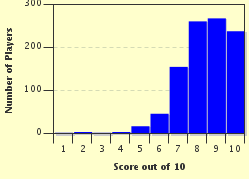Quiz Answer Key and Fun Facts
1. 1910s: The first woman to fly as a passenger in an aeroplane was an American lady called Mrs Hart O. Berg. This great event took place in 1908 when she accompanied Wilbur Wright on a short flight. What fashion craze did she start that would become popular during the 1910s?
2. 1920s: In the 1920s, young fashionable women of the western world were known as Flappers. They wore short dresses, heavy make-up, drank alcohol (shock!), smoked (gasp!), danced in an unrestrained fashion (horror!) and even drove cars (Arrest that woman!). Why were they called Flappers?
3. 1930s: Coco Chanel is considered the fashion guru of the 1930s by many people today. Yet she had a great Italian rival who was also an expert in the field of fashion during this time. What was her name?
4. 1940s: What body part in particular was emphasised by extra padding during this era for both men and women?
5. 1950s: Which of the following fashions, more than any other, symbolised female fashions for the 1950s?
6. 1960s: And on to the sixties. "I'd like to give you a rainbow, man, but all I've got is this filthy money". The 1960s was THE era for rebelliousness, anything goes, and spaced out idiots staring entranced at candles. Which band symbolising this entire era, ushered in a new hair style for men and boys at this time?
7. 1970s: And the fashions grew wilder and weirder, but by now this wild, weirdness was more formulated by the fashion gurus. Consequently, the various outfits became more manicured, for want of a better word. There was a designed rebelliousness about it all. What form of footwear, of the following choices, was big news in the 1970s?
8. 1980s: Because of the dance craze generated by the 1983 film "Flashdance", which of the following choices, as an item of fashion, began to be seen on all shapes and sizes during the 1980s?
9. 1990s: This era ushered in the exact opposite in fashion from the weird and startling fashions of the 1980s. The look that came in during this time was known by which single word?
10. 2000s: The first ten years of fashion in the 21st century have been described as "the mash-up decade". Everything from all the previous eras was thrown into the mix. A particular facial fashion became very popular during this time for men, one that made many people long for a shaver. What was this fashion?
Source: Author
Creedy
This quiz was reviewed by FunTrivia editor
kyleisalive before going online.
Any errors found in FunTrivia content are routinely corrected through our feedback system.

